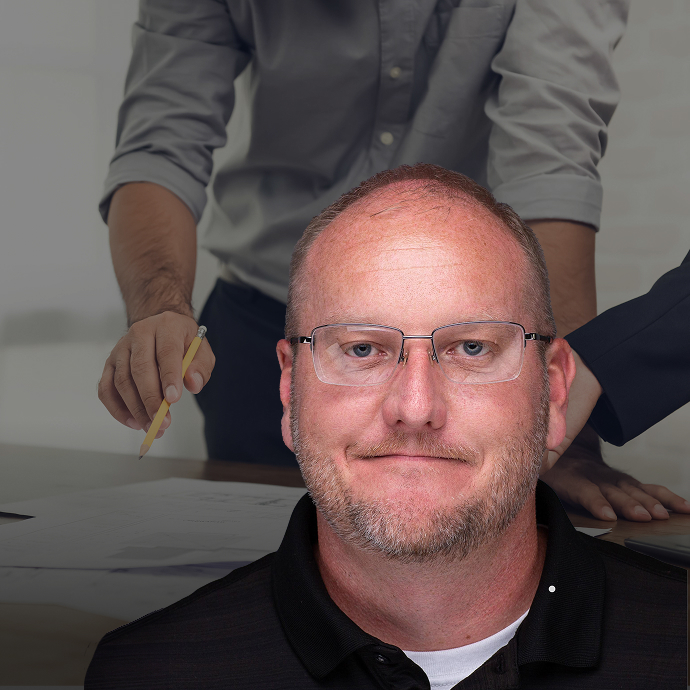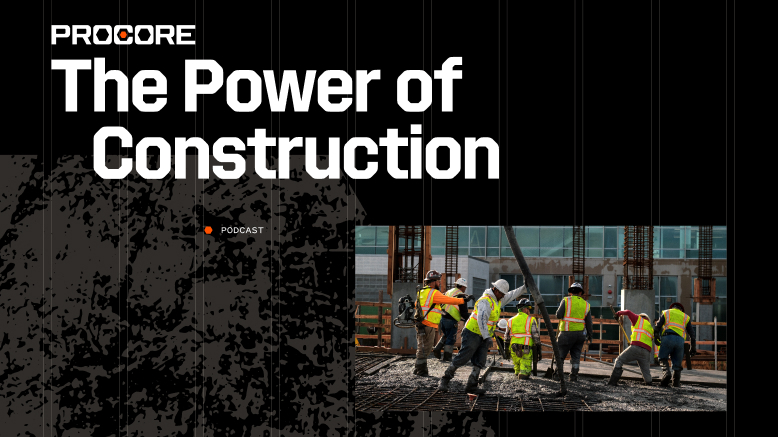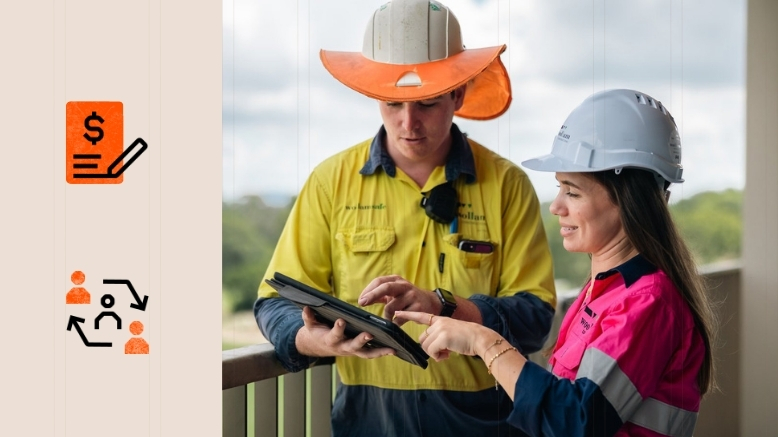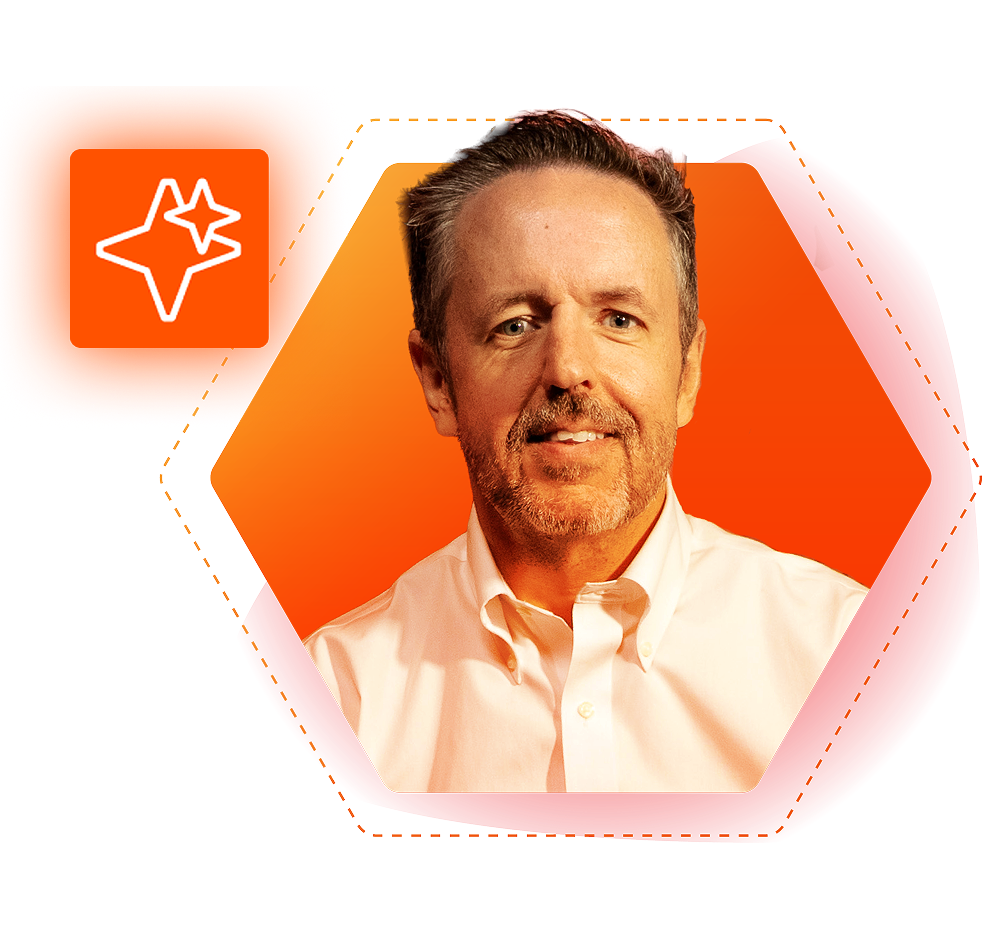— 8 min read
The Construction Bid Interview & Follow-up: Closing the Deal

Last Updated May 9, 2025

Taylor Riso
Contributing Writer
91 articles
Taylor Riso is a marketing professional with more than 10 years of experience in the construction industry. Skilled in content development and marketing strategies, she leverages her diverse experience to help professionals in the built environment. She currently resides in Portland, Oregon.
Last Updated May 9, 2025

During construction project bidding, the interview is often the last part of the request for proposal (RFP) process and one of the most influential. For teams that advance to the shortlist, the interview is the final opportunity to make a strong impression — and an important step in turning a pursuit into a project.
This stage gives clients a chance to meet the team, test how well they understand the project and evaluate whether they’re a good fit. It’s not just about technical capabilities. It’s about communication, alignment and the ability to deliver on what was promised in the proposal.
This article breaks down how to prepare for the interview stage, what clients are really looking for and how to follow up in a way that leaves the door open — even when a pursuit doesn't result in a win.
Table of contents
Align early around the interview strategy.
Once the shortlist is released, the procurement timeline moves fast. Interview dates are often just a few days out, which means teams have to be ready to shift gears immediately. The most effective firms don’t wait — they begin blocking time and organizing internally as soon as the proposal is submitted.
Teams that pursue work strategically through a clear go/no-go process can usually anticipate an interview, which makes early prep a logical next step — not a scramble.
The first step is to schedule an interview kickoff meeting. This meeting sets the direction for the team by confirming the interview format, outlining the client’s priorities, assigning roles and identifying key stories or case studies to feature. It’s also the moment to align on tone, visual support and what each presenter needs to prepare.
Pro Tip
Start internal prep while the proposal is still under review. Block time for the interview prep sessions early, so the team has space to focus once the shortlist is announced.
From there, teams typically move into multiple prep sessions, often three hours or more each, to practice delivery, tighten messaging and build team chemistry. Getting these on the calendar early helps avoid last-minute conflicts and gives everyone the time they need to prepare with confidence.
Strong interviews come from consistency and preparation, not from rushing through content the night before. Early alignment helps avoid schedule conflicts, last-minute revisions and messaging that feels disconnected.
Translate proposal themes into action.
The most effective interviews pick up where the proposal left off, reinforcing core themes with added clarity, depth and real-world context. This is the stage where teams shift from describing their approach to demonstrating how it works, using examples that speak directly to the client’s priorities.
Pro Tip
Treat the interview as the client’s first experience working with your team. Show them how you think, how you problem-solve and how you respond to what matters most.
Interview messaging should align closely with the proposal, but go further in showing how the team’s strategies will be implemented. If the proposal included a resequenced schedule to reduce risk, the interview is the place to explain why that decision was made—drawing a direct line from the client’s stated priorities to a specific strategy informed by past experience.
It’s also an opportunity to clarify tradeoffs and walk the client through the team’s thinking. Rather than simply restating the planned approach, the focus should be on how and why certain decisions were made. That level of transparency builds trust and signals a clear understanding of the project from the client’s perspective.
Put the delivery team front and center.
Clients use the interview to evaluate more than just qualifications — they want to know who they’ll be working with and how that team shows up under pressure. That makes it essential to spotlight the people who will be managing the project day to day.
Introduce the team with more than just names and titles. Each presenter should share why the project matters to them, what they’re bringing to the table and how their experience connects to the client’s goals. This is where clients begin building trust with the individuals who will be responsible for making the project successful.
Pro Tip
The client should set the tone—literally. Whether the interview calls for a polished, formal approach or a more conversational format, the team’s delivery should reflect the client’s culture and expectations. Alignment here shows attention to detail and respect for how the client works.
Focus on the roles that carry the most weight in execution: the project manager, senior PM and superintendent. These are the people who drive daily communication, manage logistics and respond when challenges arise. Clients want to hear directly from them—not just executives who won’t be involved in the work.
When possible, keep the interview group focused to those with meaningful roles on the project. Overloading the room with senior staff or peripheral team members can dilute the message, confuse responsibilities and make it harder for the client to engage with the people who will actually be doing the work.
Build confidence through practice, not scripts.
Strong presenters aren’t always the most experienced builders — they’re the ones who’ve had time to prepare. Many technical team members don’t present regularly, which makes structured practice just as important as content.
Rather than handing out full scripts, ask each presenter to develop their own talking points for the sections they’re responsible for. This gives them the space to speak naturally and show their expertise in a way that feels authentic. Encourage team members to make eye contact, share real examples and speak from experience. If someone forgets a point, others should feel comfortable stepping in to help. That kind of flexibility doesn’t just support the speaker — it shows the client that the team has real synergy, communicates well and knows how to work together under pressure.
Mock interviews can be extremely helpful in building confidence. Teams may need multiple sessions to get comfortable, adjust their timing and build momentum. Even seasoned staff benefit from repetition. The goal isn’t to be perfect — it’s to be clear, authentic and prepared.
Use visuals that support the overall messaging.
Pro Tip
Understand the interview format as early as possible — virtual vs in-person, panel vs one-on-one. These details affect what’s presented, how materials are shared and how the team should show up.
The right visuals can give a presentation structure, reinforce key ideas and help the team communicate more clearly. A clean, well-designed slide deck keeps the conversation on track, but it shouldn’t compete with the presenters. Prioritize simple layouts, limited text and graphics that highlight—not repeat—what’s being said.
When it fits the project, consider bringing a visual element that goes beyond the deck. A 3D site logistics model or early sequencing concept can show how your team is already thinking through the work and adapting to the client’s priorities. These kinds of materials help demonstrate preparation, not just polish.
Use client feedback to strengthen the next pursuit.
Once the client has made their selection, follow-up becomes a key part of the pursuit strategy. It’s an opportunity to gather meaningful feedback, strengthen relationships and improve your team’s performance on future interviews.
Messages should be warm, specific and thoughtful. A quick thank-you isn’t enough. Ask direct questions about what stood out — both in the proposal and the interview—and where your team might have missed the mark. Clients often provide clear, actionable feedback: maybe the superintendent didn’t connect, or the interview spent too much time on approach and not enough on risk. These insights are valuable, and they’re rarely shared unless requested.
When something didn’t land, use it as a coaching moment. It could be a presentation issue, a tone mismatch or a missed opportunity to reinforce a key message. Either way, feedback should flow back into how the team preps and presents moving forward.
Sample Follow-up Questions
- What part of the interview stood out — positively or negatively?
- Were there any gaps in what the team addressed or emphasized?
- Did the structure or delivery meet expectations for this type of project?
- How did this team compare with others in terms of preparation, clarity and connection?
- What ultimately sets the selected firm apart? Was there something they did — or didn’t do — that made the difference?
Treat a loss as part of the pursuit process.
When a firm isn’t selected, a well-crafted closing message can help maintain the relationship and position the team for future opportunities. It’s a small step that reflects professionalism and long-term interest in the client’s work.
The message should thank the client for the opportunity, acknowledge what the team took away from the process and express continued interest in similar pursuits. It should also be tailored, referencing specifics from the interview or proposal process rather than relying on generic language. The intent isn’t to reverse the decision, but to reinforce the firm’s capabilities, alignment with the client’s priorities and to keep the firm in mind for future opportunities.
This communication can come from marketing, leadership or whoever has the strongest existing connection to the client. When done well, it signals that the team was invested in the process and remains a serious contender for future work.
Build a Strong Foundation with our Preconstruction Course
With 20+ years of experience, Ben Ashburn teaches you how to streamline planning, bidding, and procurement for better outcomes.

What Sets Winning Teams Apart
Winning work doesn’t stop at the proposal. The interview is where teams translate ideas into action, demonstrate how they work and show that they understand what matters most to the client. It’s a continuation of the pursuit — not a separate phase.
The most effective teams bring intention to every part of the process. They plan early, present clearly and follow through, even when the outcome doesn’t go their way. That consistency builds trust, sharpens performance and positions the firm to compete again.
Teams that treat interviews as part of a long-term strategy — not just a single event — are the ones that continue to improve, build relationships and win more work over time.
Was this article helpful?
Thank you for your submission.
100%
0%
You voted that this article was . Was this a mistake? If so, change your vote
Scroll less, learn more about construction.
Subscribe to The Blueprint, Procore’s construction newsletter, to get content from industry experts delivered straight to your inbox.
By clicking this button, you agree to our Privacy Notice and Terms of Service.
Thank you!
You’re signed up to receive The Blueprint newsletter from Procore. You can unsubscribe at any time.
Categories:
Written by

Taylor Riso
Contributing Writer
91 articles
Taylor Riso is a marketing professional with more than 10 years of experience in the construction industry. Skilled in content development and marketing strategies, she leverages her diverse experience to help professionals in the built environment. She currently resides in Portland, Oregon.
View profileExplore more helpful resources

What Happens When Data Drives the Business?
Construction has long been seen as a low-margin industry. But what if the real problem isn’t the margins—it’s how decisions get made? In episode 17 of The Power of Construction,...

Vet Contractors with Confidence: A Guide to Smart Bidder Selection
Selecting the right bidder is one of the most consequential decisions a construction team makes — yet it often happens under tight deadlines, with limited visibility into the long-term implications....
Construction Business Development: Tracking and Winning the Right Opportunities
Construction business development isn’t just a response to deadlines: It’s a long-term strategy rooted in focus, visibility and timing. Delays, funding gaps and market pressure have made it harder to...

Qualifications-Based Selection: Prioritizing Expertise over Initial Cost
For large or complex construction projects, owners and public agencies often use qualifications-based selection (QBS) to prioritize experience and capability over merely selecting the lowest bid. QBS involves owners choosing...
Free Tools
Calculators
Use our calculators to estimate the cost of construction materials for your next project.
Templates
Find a template to help you with your construction project tasks.
Material Price Tracker
Get the latest U.S. retail prices and view historical trends for common building materials.
Glossary
Explore key terms and phrases used in the industry.
